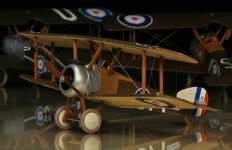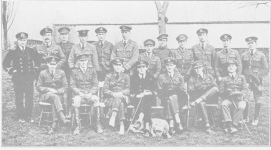Henry’s exploits are also immortalised in the 1:48 scale Corgi Aviation Archive Collector Series AA38101 Sopwith Camel Diecast Model.
Aviation Archive Collector Series AA38101 Sopwith Camel Diecast Model.
Biography
Henry Botterell was born on 7 November 1896 in Ottawa, Ontario the son of a civil servant. In the years immediately prior to the outbreak of war in Europe, he worked with the Bank of North America (today the Bank of Montreal). In 1916 he successfully applied to be a civilian flying trainee and was consequently dispatched to England for relevant training. At around this time his older brother was killed in action while serving with the Toronto 48th Highlanders in France.
On 16 May 1917, then aged 20, Botterell (referred to as "Nap" on account of his apparent likeness to Napoleon) enlisted with the Royal Naval Air Service (RNAS) in the capacity of Probationary Flight Officer. His early flight experiences -
En-
During his service, Botterell flew a variety of planes, including the Sopwith (Pup, Camel and Snipe), the RE8, the SE5, the Claude Grahame-
Botterell flew a variety of planes, including the Sopwith (Pup, Camel and Snipe), the RE8, the SE5, the Claude Grahame-
After the armistice (by then a Flight Lieutenant), and following a further year with the RAF, Botterell returned to Canada -
After his return to Canada, Botterell never flew again except on commercial flights. He returned to his work at the Bank of Montreal as Assistant Chief Accountant, initially in Quebec and then in Montreal, eventually retiring in 1970. With the advent of the Second World War Botterell served once more, this time in command of an air cadet squadron at Lachine in Quebec.



Balloon Buster 100 -






